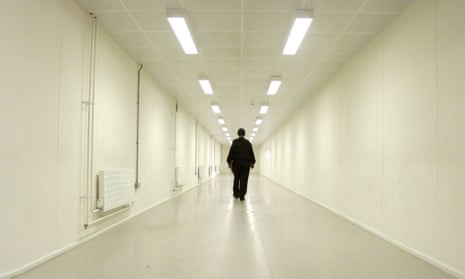Only 6% of detainees classified as “vulnerable and at risk” after abuse including torture, sexual violence or trafficking were subsequently released from UK immigration centres, according to new data.
Annual government figures reveal that just 364 of 6,300 individuals who were identified by doctors and social workers as at particular risk of harm were subsequently allowed out of detention.
The cases were identified as part of a scheme introduced in 2016 that was designed to keep vulnerable adults out of detention. Campaigners said the figures were totally “unacceptable,” particularly after the Windrush scandal.
Earlier this week the joint committee on human rights (JCHR) called for immigration detention powers to be stripped from the Home Office and passed to independent judges.
Sonya Sceats, the chief executive of the charity Freedom from Torture, said: “These figures are a shocking indictment of the home secretary [Sajid Javid]’s high-profile but floundering agenda to make the immigration system more humane in the aftermath of the Windrush scandal.
“It is unacceptable that survivors of torture and other abuse are kept locked up even when the Home Office has medical and other independent evidence of their vulnerability. We know from our therapeutic case work that the psychological impact can be catastrophic.”
The government’s Adults at Risk policy was introduced in 2016 to keep traumatised adults out of detention with the “vulnerable and at risk” classification involving an individual “suffering from a condition, or who has experienced a traumatic event (such as trafficking, torture or sexual violence), that would be likely to render them particularly vulnerable to harm if they are placed in detention or remain in detention”.
Campaigners argue that people identified as vulnerable and not released from immigration detention suffer further harm and increased risk of self-harming and suicide.
The data, revealed in a freedom of information (FOI) request made by Freedom from Torture, also revealed that between September 2017 and September 2018, there were 907 instances where medical professionals concluded that individuals were even more traumatised and concluded that detention would definitely harm the detainee, and of these only 502 were released.
A separate new FOI shows that, at any one time, there are more than 1,000 adults at risk in detention at any one time, and around 27,000 people enter the immigration detention estate each year.
Of the 1,000 individuals identified as at risk, of these 720 people are, on average, designated by doctors and other professional including social workers as being at risk of harm.
Last week’s JCHR report preempted the FOI figures by already casting doubt on the scheme’s effectiveness, with MPs stating they were concerned that the policy did not give “adequate protection to individuals at risk of harm in detention”.
A Home Office spokesman said: “Immigration detention is an important part of the wider immigration system, but we are committed to using detention sparingly and only when necessary. An individual is only detained when there is a realistic prospect of removal within a reasonable timescale.
“The home secretary has made clear that he is committed to going further and faster to explore alternatives to detention, increase transparency around immigration detention, further improve the support available for vulnerable detainees and initiate a new drive on detainee dignity.”
